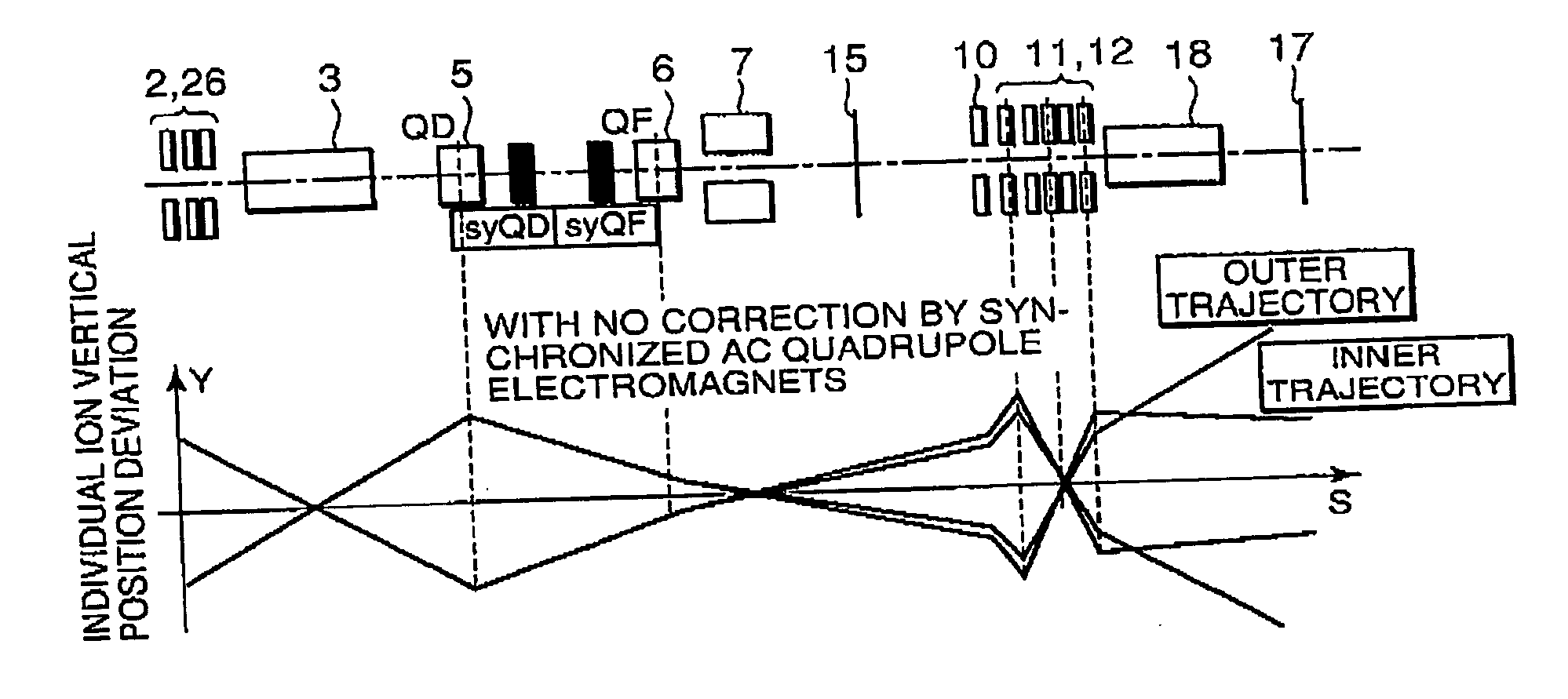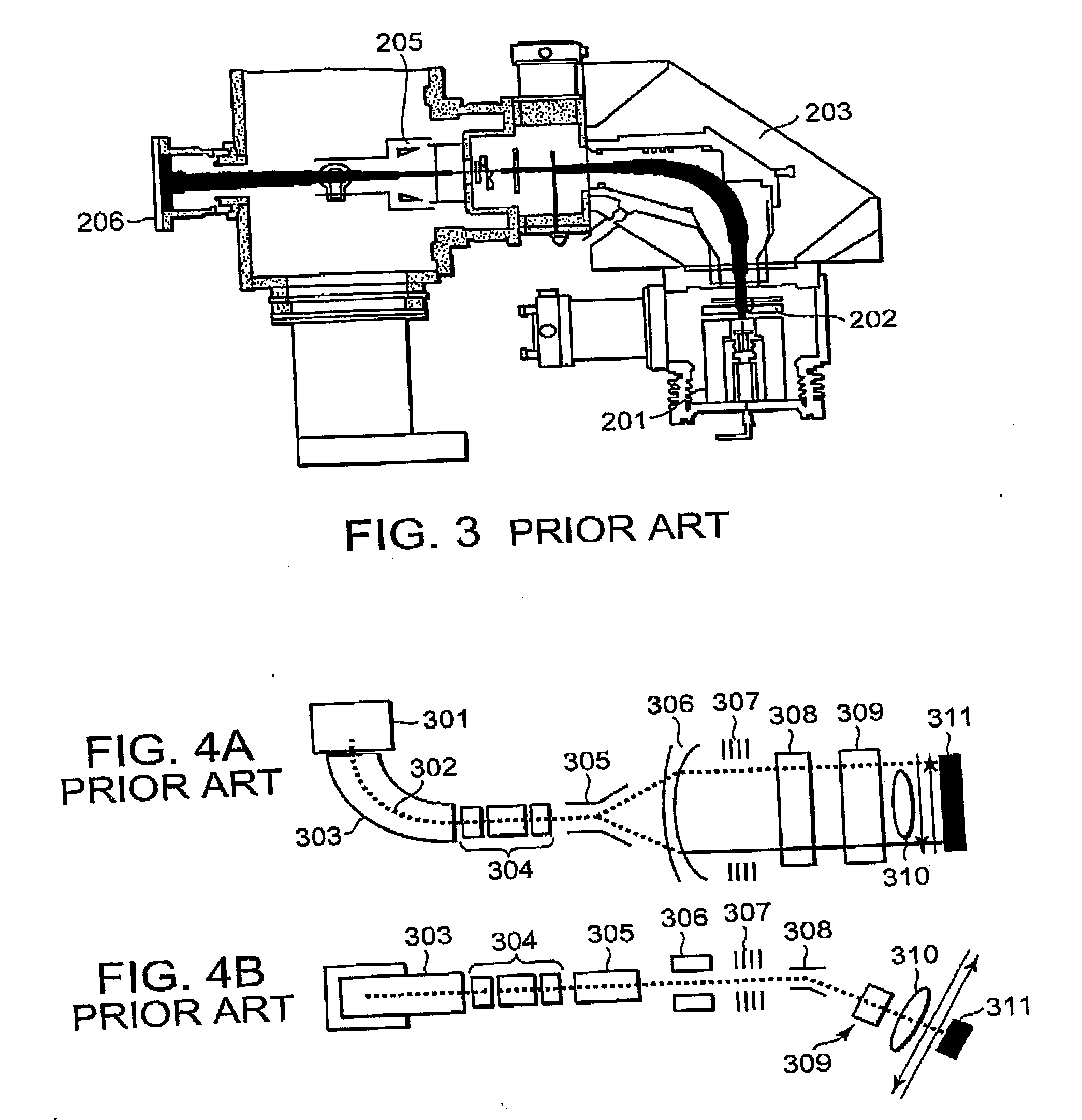Method to increase low-energy beam current in irradiation system with ion beam
a technology of ion beam and beam current, which is applied in the field of improving the irradiation system with an ion beam, can solve the problems of reducing the yield of the most advanced devices, increasing the variation of device performance, and changing the basic device structure, so as to achieve the effect of increasing the low-energy beam curren
- Summary
- Abstract
- Description
- Claims
- Application Information
AI Technical Summary
Benefits of technology
Problems solved by technology
Method used
Image
Examples
Embodiment Construction
[0093] Prior to describing a preferred embodiment of this invention, description will be given hereinbelow about those points that are improved for applying this invention to an ion implantation system.
[0094] Note that a “horizontal axis” which will hereinafter be referred to represents one axis in a plane in a direction perpendicular to a beam advancing direction and in a plane formed by trajectories in the mass analysis dipole magnet (dispersive plane). Likewise, a “vertical axis” represents one axis in the plane in the direction perpendicular to the beam advancing direction and perpendicular to the horizontal axis. A “longitunal direction”represents the beam advancing direction. Thus the “horizontal” and “vertical” do not necessarily refer to the surface of the earth.
[0095] By this invention, a high-current beam has become able to be transported while keeping the ability of the beam scan type single-wafer middle-current ion implantation system that enables the ion implantation ...
PUM
 Login to View More
Login to View More Abstract
Description
Claims
Application Information
 Login to View More
Login to View More - R&D
- Intellectual Property
- Life Sciences
- Materials
- Tech Scout
- Unparalleled Data Quality
- Higher Quality Content
- 60% Fewer Hallucinations
Browse by: Latest US Patents, China's latest patents, Technical Efficacy Thesaurus, Application Domain, Technology Topic, Popular Technical Reports.
© 2025 PatSnap. All rights reserved.Legal|Privacy policy|Modern Slavery Act Transparency Statement|Sitemap|About US| Contact US: help@patsnap.com



